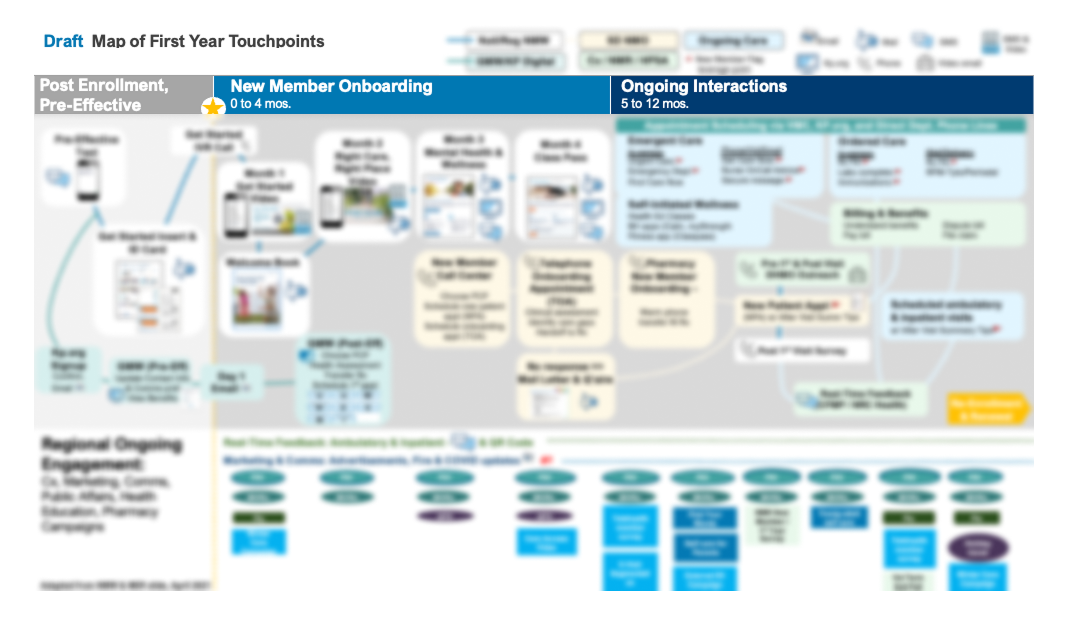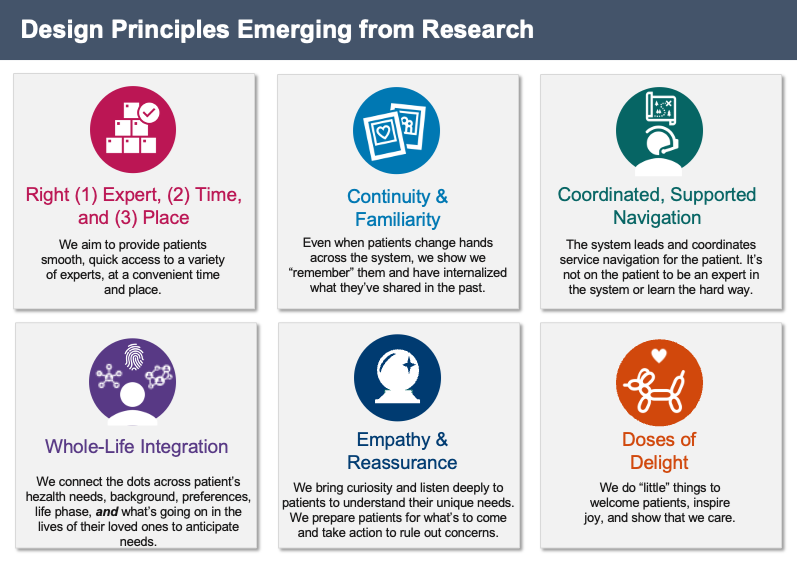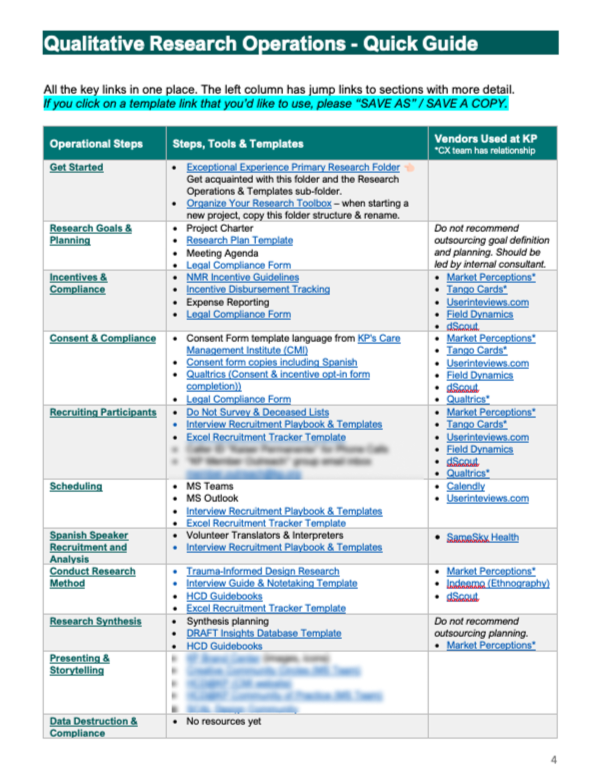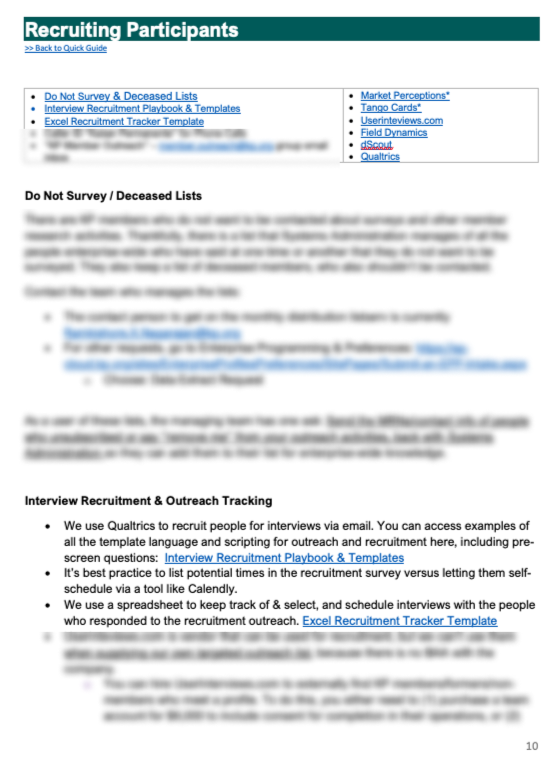Customer Experience
Exploring why people leave a service to improve retention
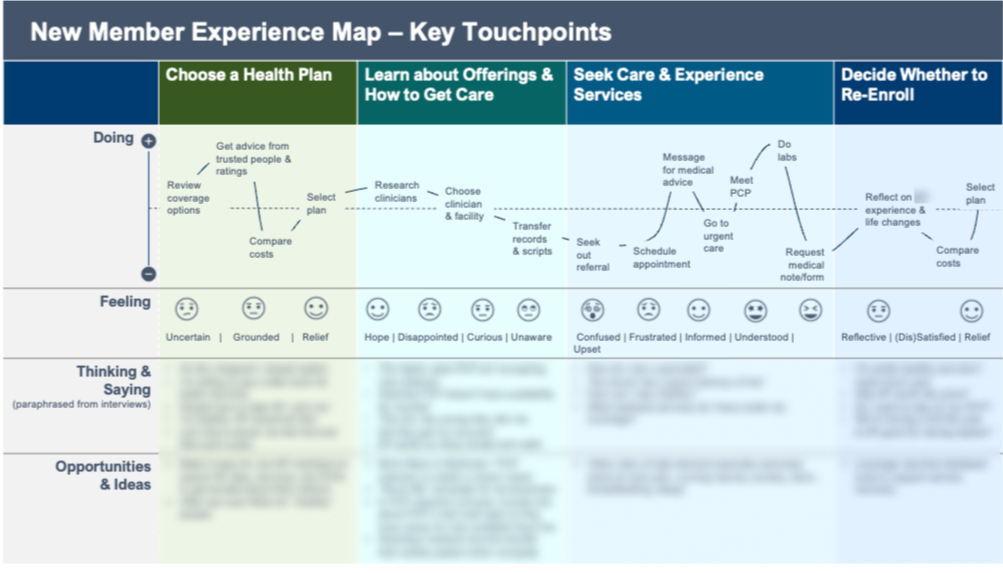
“I felt like I had to be an advocate for myself—like, a lot.”
Summary and Impact
While most patients leave a health system for reasons beyond the organization’s control, a meaningful share stop seeking care due to a negative experience.
As the first design and innovation strategist hire on a customer experience team serving 5 million members, I mobilized a task force to identify, test, and implement ways to improve new member satisfaction and retention.
Below are key results from my collaborations with 40+ colleagues across business lines, functions, and geographic teams:
Set new priorities for the regional new member strategic plan: to strengthen bonds with members who don’t seek care regularly, mental health access, and lactation supports for new parents.
Built consensus to eliminate an unpopular marketing touchpoint in the new member journey.
With my coaching, a local team built the internal capability to lead user research operations without ongoing regional support.
Before: Overwhelming influx of touch points (content blurred)
After: Shared priorities, experience principles, and two funded pilots
My Contributions
Project Management and Planning
To start, I reached out to people leading existing new member efforts to learn about their progress, priorities, and any wish items that felt beyond their own influence. I hosted several kickoff and alignment sessions with a cross-functional group of 40+ people from different business lines. I created a suite of living strategy and governance documents, hosted 1:1 interviews, and fielded co-design survey to enable those who were unavailable or less likely to speak up in meetings.
Project charter with KPIs
Stakeholder map and governance structure
Initiative roadmap
Research
Auditing Existing Data
To understand the current state of the program, I did an audit of all the existing new member touch points managed across seven different teams. I also reviewed existing member research surveys, web analytics, and customer feedback data.
Touchpoint audit, behavioral analytics, and survey research
Collecting New Data
To fill knowledge gaps, I collaborated with a dozen stakeholders to design and rollout a new, end-of first year member survey questionnaire. In addition, I conducted interviews with 20 current and former new members.
Journey map based on survey and interview research
New member survey questions fielded to 13K respondents
Creating Concepts
I synthesized findings from the historic and new research into a set of Design Principles, along with a set of starter concepts to inspire brainstorming within the broader task force.
Design principles and starter concepts to guide future changes
Facilitation
To help the broader group form a point of view, I organized co-design workshops to align 30+ stakeholders on:
What patterns resonated across the current state audit and new primary research.
What dimensions we’d use to prioritize pain points and opportunities for change.
Selecting focus areas and concepts to test.
Assigning accountability for leading concept development and testing.
Two-day co-design workshop for 30 participants
Infrastructure and Capacity Building
With support from staff across the organization, I created operating standards to standup up and sustain regional member research operations.
The qualitative research guide I created is still in use and has enabled local teams to run their own research activities, including multilingual recruitment and analysis, without regional support.
Qualitative Research Opeations Guide
Lessons
Offer asynchronous methods for people to contribute to strategy and intervention ideas, as many people don’t have the time to attend live workshops or less effective doing generative activities on the fly.
In hierarchical systems, setting milestones and urgency early in a project is important to fend off inertia. And executive sponsorship is essential.

